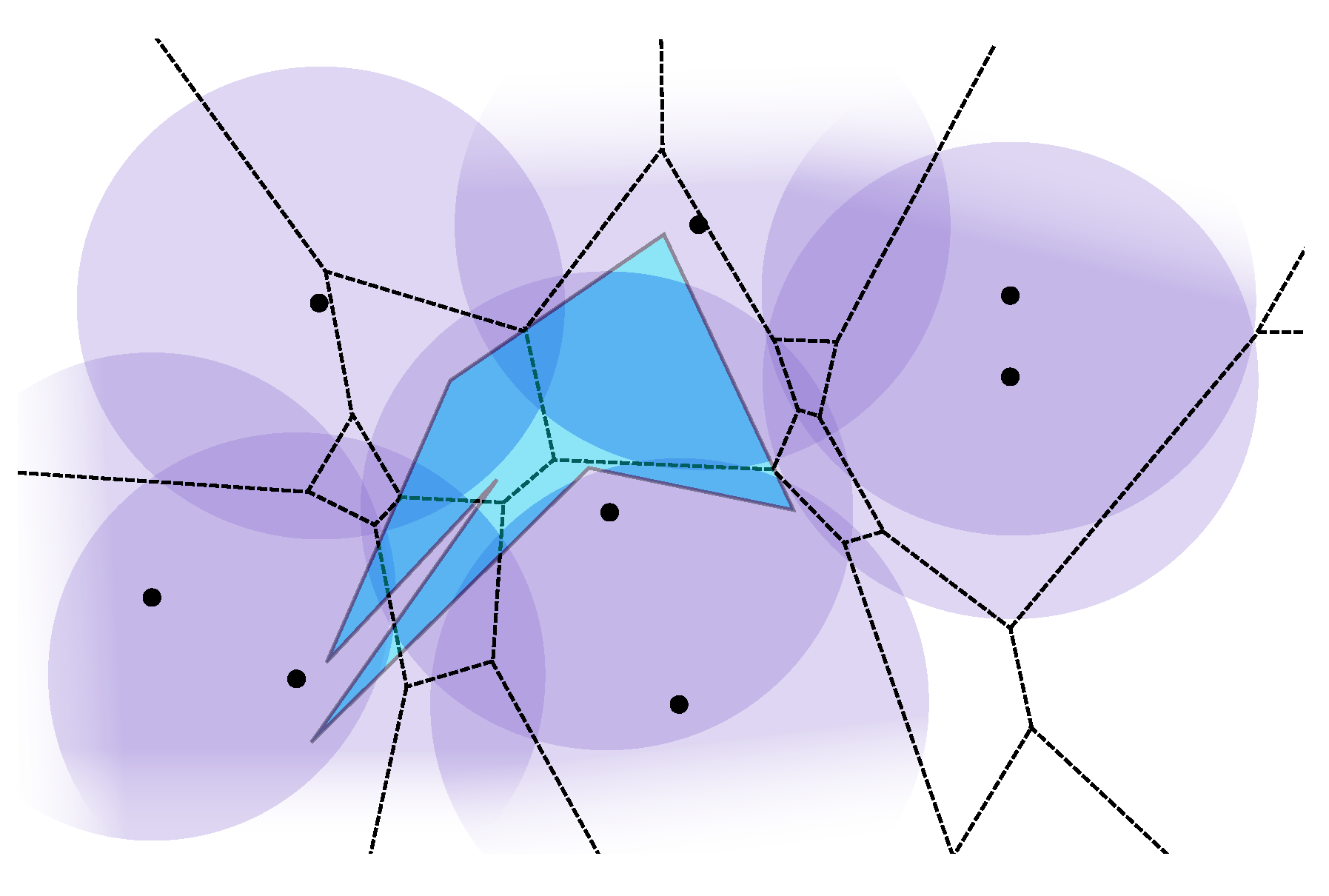计算几何 W36 Introduction to Parallel Computation
阅读材料
Parallel Algorithms
by Guy E. Blelloch and Bruce M. Maggs
Selected topics from (Sec. 1 and 2.1)
Modeling parallel computations
sequential algorithm: a single processor connected to a memory system (RAM)
parallel computations: more complicated - requires understanding of the various models and the relationship among them
two classes of parallel models
multiprocessor
n processors, shared memory
three types multiprocessor models:
local memory machine model
each processor can access its own local memory directly, but can access the memory in another processor only by sending a memory request through the network.
modular memory machine model
processor accesses the memory in a memory module by sending a memory request through the network.
PRAM (parallel random-access machine) model
a processor can access any word of memory in a single step. these accesses can occur in parallel.
controversial: no real machine lives up to its ideal of unit-tie access to shared memory
network topology
- bus
- 2-dimensional mesh
- hypercube
- 2-level multistage network
- fat-tree
routing capabilities: latency and bandwidth
primitive operation
- instruction that perform concurrent accesses to the same shared memory location
- instructions for synchronization
- instructions that perform global operations on data
work-depth model
alternative to focusing on machine, focusing on the algorithm
cost of algorithm: total number of operations it performs & dependencies among those operations.
work W, depth D, parallelism P:
three classes of work-depth model:
circuit models
node (represents basic operation)
arcs (provide inputs to other node)
acyclic (无环的)
vector machine models
algorithm is expressed as a sequence of steps, each of which performs an operation on a vector of input values, and produces a vector result.
work: sum of the work of its steps
depth: number of vector steps
language-based models
work: calling 2 func in parallel = sum of the work of the 2 calls
depth: equal to maximum of the depth of the 2 calls
assigning costs to algorithms: roughly work = time*num of processors, slightly additional cost than same sequential computer.
Parallel algorithmic techniques
divide-and-conquer 分治
even divide-and-conquer algorithms that were designed for sequential machines typically have some inherent parallelism.
example: merge-sort algorithm
(后面的内容不用看了)
课堂笔记
Motivation and History
1967 Amdahl’s law
SIMD, MIMD, vector processing etc
motivation
- some tasks are naturally parallel
- multiple computational units in one chip
- possibility of using special hardware GPU, TPU
- possibility of have multiple machines
PRAM: Intro
PRAM aka Parallel Random Access Machine
simpler than other models
components:
- a shared memory
- p processors
- i-th processor has an ID
- different, they can run different codes
- synchronized
time complexity
O(1) memory access time
O(1) computation time
tot: O(1)
PRAM: Variants
exclusive read, exclusive write (EREW) PRAM
- no concurrent accesses by multiple processors at any time step
concurrent read, exclusive write (CREW) PRAM
- only concurrent accesses for reading are allowed
concurrent read, concurrent write (CRCW) PRAM
- concurrent access for both reading and writing are allowed
- ambiguous
CRCW PRAM variants:
- Common-CRCW PRAM
- concurrent accesses must write the same value
- Arbitrary-CRCW PRAM
- one processor succeeds, don’t know which one
- Priority-CRCW PRAM
- processor with the smallest ID succeeds
- min-CRCW, sum-CRCW, OR-CRCW, XOR-CRCW PRAM
- the values of concurrent accesses are combined using a predetermined combining operation and the result is written
PRAM example
given an array A of size n, find the smallest value.
RAM:
1 | min = +inf |
Trivial O(n) solution
min-CRCW PRAM:
1 | for i = 1 to n in parallel do |
trivial O(1) solution (n processors)
common-CRCW PRAM (all processor must write the same thing)
- use processors
- for every pair of A[i] and A[j]
- reads and compares A[i] and A[j]
- writes the results in cell of matrix M
- find which row of M is all 0 (只要有一行有 1 的值,那么该行对应的数肯定不是最小值)
EREW PRAM? Divide and conquer (recursion)
Synchronization
- processors wait for all to be done
Other Models
Fork-join variant
n threads
- start with 1
- thread t can spawn 2 child threads c1 and c2
- can wait for children to finish
can simulate PRAM with +O(log n) overhead
assume atomic operations
concurrency control via mutexes
Other models
- BSP
- OpenMP
- Open MPI
- Massively Parallel: lots of processors connected
- GPU
- MapReduce
- Distributed computing …
Work Depth and Optimality
n: input size
p: number of processors
T(n, p): parallel runtime
work: T(n, p) * p
sequential time: T(n, 1)
depth aka span: T(n, ∞)
optimality
- work matches best sequential
- depth matches best PRAM (with p=∞)
Example
comparison-based sorting
- lower bound
- cannot sort in time with processors
Brent’s Scheduling Principle
Theorem: Any PRAM algorithm with work and span ban be implemented on a p-processor PRAM to run in time .
Implications
difficulty of parallelism
- keeping the same work
- reducing the depth
example
Prefix Sums
input: Array of size . We have n processors. Compute all the prefix sums.
sequential time
but parallel is wrong.
Correct parallel method: recursion depth: work
unified approach:
split into pairs
add and join adjacent pairs
recurse
unjoined
depth
optimal sequential work of
1 | procedure PREFIX-SUMS(a[1...n]) |
Many fundamental problems are solved with
- recursion
- basic divide and conquer
prefix sums: solve many fundamental, RAM trivial problems
- array compaction
- merging
- partition
- sorting



